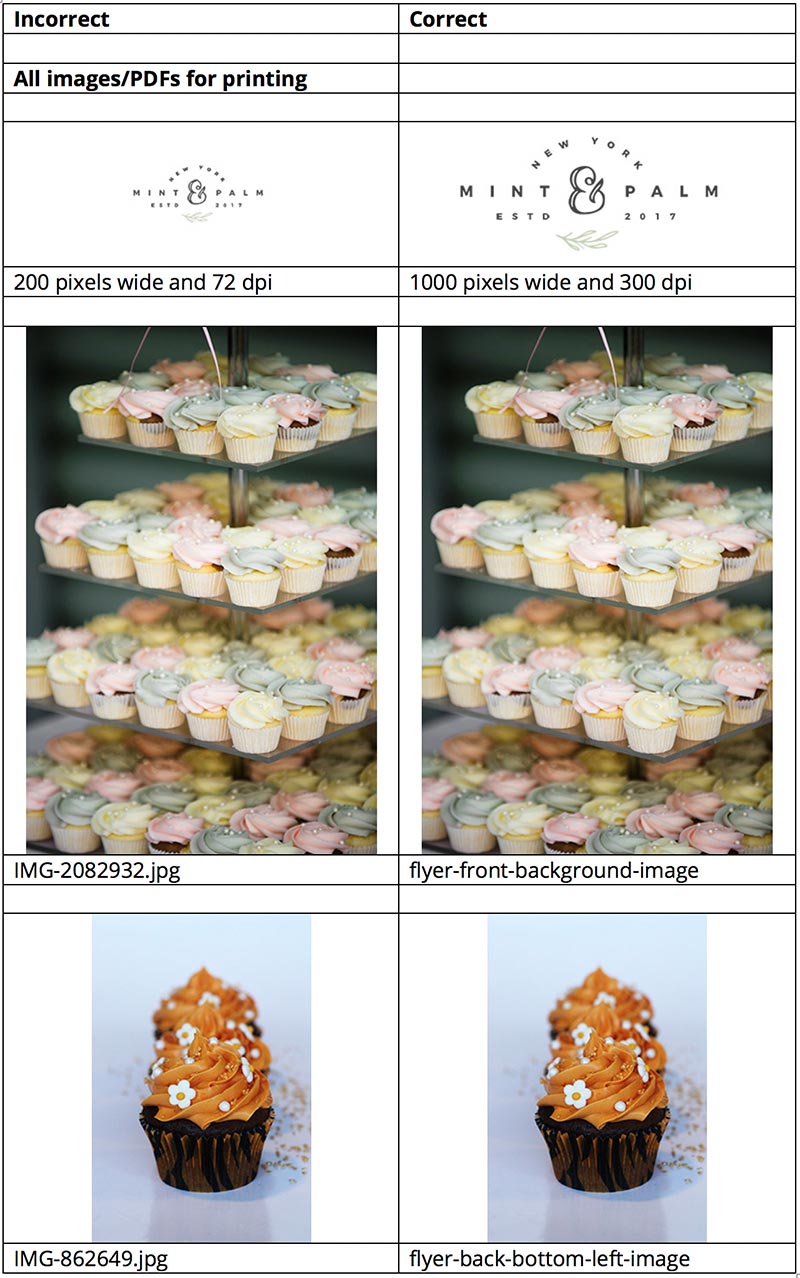Introduction
Poorly formatted images will not look crisp and clear once printed. Therefore, we will have to spend time editing them, which is a chargeable service.
There are four main aspects of image formatting for printing:
- the image’s dimensions
- the image’s file size
- the file name of the image
- the format of the image
Image Dimensions
Digital images for printing are measured in mm or cm in general. For example the finished size of our luxury business cards is approximately 85 mm x 55 mm. When we are preparing your item(s) for print we will tell you the dimensions of the relevant images that you need to supply.
There are two methods of altering image sizes:
- Image cropping, which entails removing part of the original image so that the finished image is the correct size. The original proportions of the image are changed.
- Image resizing, which entails retaining the whole image but either making it smaller or larger. The original proportions of the image remain the same.
We will also need to take into account ‘bleed’ lines. These are lines that any key content on the image must not go beyond. Bleed itself is an extra bit of image or background colour that extends beyond the trim area of your printing item. And text needs to sit within the lines.
Using the example of our business cards above, where the finished size is approximately 85 x 55 mm, the background image or colour block needs to be 91 x 61mm.
Image File Size
As important as the image file’s dimensions are, the image file’s size is critical to the quality of your printed item. Images need to be as large as they can be.
Images must be at least 300 dpi and large enough to fit the space they will occupy on the printed item. We are able to format images for you, however we cannot ‘perform miracles’ on tiny, low resolution images that you want to be made big enough. Unless the image is in Vector format.
Image Filenames
When supplying your images we need to know where they will go on the printed item. Therefore we need you to name the files correctly. For example:
- flyer-background-front-side
- flyer-background-top-back-side
- leaftet-background-page-4
- mug-logo-bottom-left-hand-side
And so on dependent on the graphics(s) being designed.

Image Formats
The type of file that we require will depend on the size of the item that is being printed. For example, a business card up to a large poster can be in the following formats:
- .psd
- .jpg
Van livery and signage will need to be much bigger and in the following formats:
- .eps
- .ai
For larger file creation we offer a large print ready image extra.
